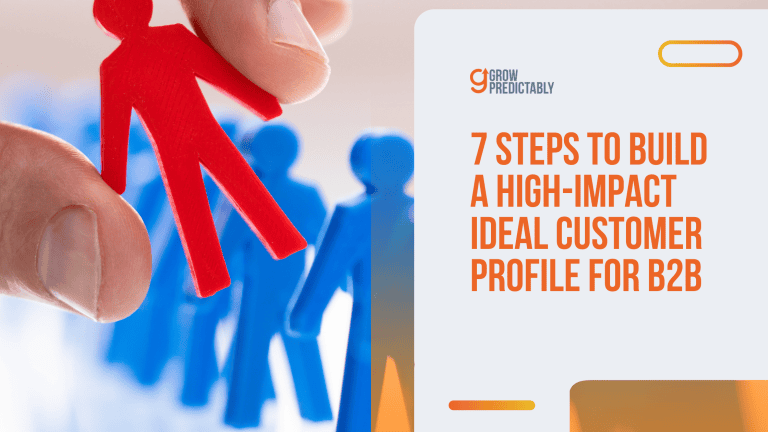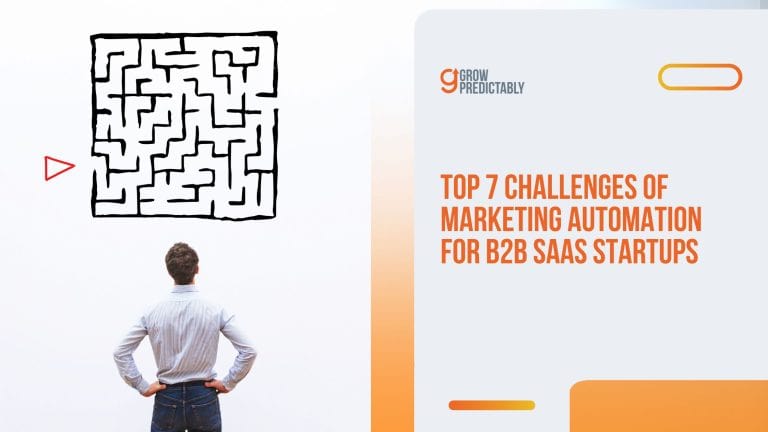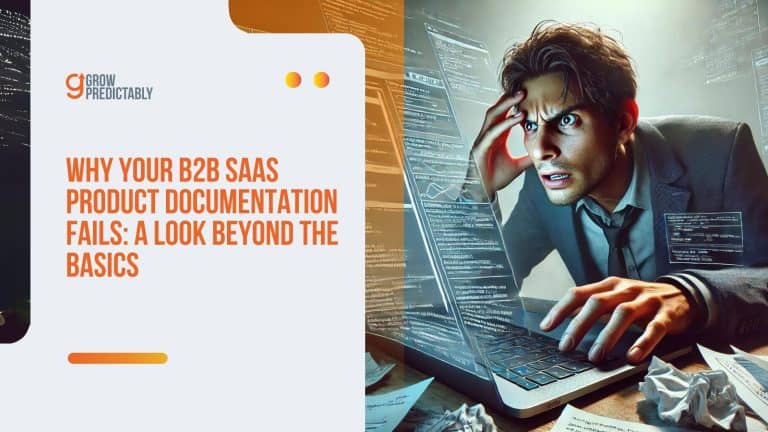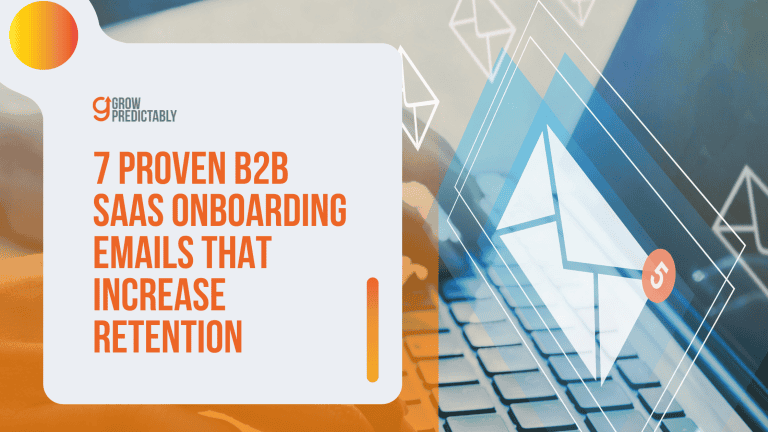12 B2B Micro SaaS Ideas to Break Into the SaaS Market
If you’re looking for profitable B2B micro SaaS ideas, THIS is the right blog.
This blog will help you discover 12 of the best micro SaaS ideas tailored for small and mid-sized businesses to help you break through the B2B SaaS world as an entrepreneur.
One key insight you’ll find here is how to validate your SaaS idea before you commit time and resources.
We will tackle real-world applications that show how you can confirm you’re solving the right problem.
If you fail to test your idea, it could lead to wasted resources and a product no one needs—and we don’t want that!
However, by validating your concept early on, you can avoid costly mistakes and focus on creating micro SaaS products that B2B customers would be ecstatic to add to their tech stack.
Let’s get started with your entry into the world of B2B SaaS.
- Micro SaaS businesses focus on solving specific problems for niche markets, allowing entrepreneurs to start small and scale at their own pace.
- B2B clients typically have bigger budgets, leading to higher revenue potential compared to B2C markets.
- Validating your SaaS idea early through customer feedback helps prevent wasted time and resources.
- Prototyping with no-code tools is a fast and affordable way to develop your minimum viable product (MVP).
- Marketing strategies like content marketing and partnerships can help attract early adopters for micro SaaS products and validate market demand.
What is a Micro SaaS?
Micro SaaS is a sub-industry of SaaS that focuses on small, focused software services for businesses.
These software services are focused on solving a specific problem for a niche market, which means micro SaaS tools don’t target a wide array of issues.
This is the beauty of Micro SaaS.
It’s all about creating targeted solutions for businesses that don’t want or are not yet ready for tools that provide a suite of features.
Simultaneously, this also helps fill gaps that are often missed by bigger SaaS brands.
For an entrepreneur, this means diving into a high-growth niche market without needing a giant team or tons of resources to jumpstart a brand from the ground up.
You can start small, scale at your own pace, and adapt quickly.
Why B2B Micro SaaS is a Great Opportunity for Entrepreneurs
For SaaS entrepreneurs, zeroing in on B2B clients can be a game-changer. Why?
Because businesses are always on the lookout for software solutions that streamline operations and boost productivity.
Because we’re in the digital age of business, many businesses today are willing to invest in tools that bring efficiency, and B2B SaaS taps into that market value.
Exploring the B2B micro SaaS market can open you to the following:
- Higher Revenue Potential: B2B clients often have bigger budgets than individual consumers. They look for reliable solutions and don’t mind paying a premium for software that meets their needs. This means more money in the bank for you.
- Longer Customer Lifecycles: Once a business integrates your software into its operations, it tends to stick around. They rely on your service for critical functions, leading to longer-term contracts and a steady stream of income.
- More Stable Cash Flow: With subscription-based models, B2B clients provide regular and predictable revenue. This stability allows you to plan for growth and make strategic investments in your business.
Looking at some numbers also highlights the profitability of micro B2B SaaS:
- On average, small and mid-sized businesses (SMBs) spend $181,000 on SaaS subscriptions annually. (Source: Gitnux)
- 73% of businesses that incorporated SaaS into their operations have seen 20-40% increase in productivity. (Source: Gitnux)
These stats show that when it comes to SaaS, focusing on B2B isn’t just a strategy—it’s a smart move for sustainable growth.
Now that you know why the B2B micro SaaS market is full of opportunities, let’s dive into how you can pinpoint a profitable idea.
With a clear strategy, you’ll be ready to tap into this promising landscape.
How to Identify Profitable B2B Micro SaaS Ideas

Finding a profitable B2B micro SaaS idea might seem confusing, especially with so many concepts out there that make you think, “How micro can I get?”
With the right approach, you can simplify the process and focus on getting started with a micro SaaS project that has a true demand in the market.
Let’s break it down into manageable steps to guide you in the right direction.
1. Focus on Customer Validation First (Problem + Market Fit)
Before diving into extensive market analysis, ensure you’re addressing a real issue:
It is when your product meets the needs of your target market so well that customers are eager to use it, buy it, and even recommend it to others. It’s the point where there’s clear demand for what you offer, and your solution effectively solves a real problem that your audience faces.
- Talk to potential customers: Conduct short, targeted interviews with 5-10 business owners in your target market to validate the problem.
- Survey through LinkedIn or forums: Post a simple poll or survey to gauge interest in your solution.
- Pre-sell the solution: Try to get potential customers to commit to using or buying the product once it’s available through early access sign-ups or deposits. This reduces time spent on detailed market research and helps confirm the problem’s relevance.
2. Use Lean Business Model Canvas
Opt for a Lean Business Model Canvas that you get draft more easily:
- Outline your idea: Use this one-page plan to think through key areas like target customers, value propositions, channels, revenue streams, and costs.
- Simplify planning: Quickly determine if your SaaS idea is viable without getting bogged down in documentation.
3. Quick & Simple Financial Projections
Validate profitability with a straightforward approach:
- Compare CAC (Customer Acquisition Cost) vs. LTV (Lifetime Value): Aim for an LTV at least three times higher than your CAC.
- Calculate LTV: Multiply the estimated subscription price by the average customer lifetime in months or years.
- Determine CAC: Add up the cost of ads, sales, and marketing per customer acquired.
4. Test Marketing with Minimal Investment
Use low-cost methods to test your acquisition channels:
- Run small-scale PPC ads: Allocate a $100 budget for ads on LinkedIn, Facebook, or Google Ads to gauge interest and conversion rates.
- Content marketing: Post value-driven content on LinkedIn in B2B groups to see how your target audience responds.
- Partnerships & Influencers: Collaborate with industry influencers or micro-influencers to promote your product.
By following these steps, you can identify profitable micro SaaS business ideas without getting overwhelmed.
Each step is designed to keep the process simple yet effective for you to ensure that you focus on what really matters: solving problems that businesses are eager to address.
With a solid approach to identifying profitable ideas, you’re set to uncover the potential in the micro SaaS market.
Let’s explore some high-potential concepts for 2025 that can kickstart your B2B journey.
12 High-Potential B2B Micro SaaS Ideas for 2025
Now, onto the most important part.
As an entrepreneur who wants to break through the B2B SaaS market, remember that you have to niche down and laser focus on the most demanding business needs that small businesses want to automate.
Here are 12 lucrative micro SaaS ideas that focus on providing specific solutions for businesses, making them a perfect fit for you or anyone aiming to break into B2B SaaS.
1. Automated Invoice Management System
This tool helps small businesses automate invoicing, payment tracking, and follow-up reminders for overdue payments. It’s a micro saas service that simplifies financial operations, ensuring timely payments and reducing manual errors, thereby boosting efficiency.
USP: Position the tool as the most user-friendly, no-frills invoice management solution for small businesses. Focus on simplicity, seamless integration with existing accounting tools, and customization for industry-specific invoicing needs.
Basic Features:
- Automatic invoice generation and payment tracking
- Recurring invoice setup
- Late payment reminders and follow-ups
- Integration with accounting platforms (e.g., QuickBooks, Xero)
2. Time Tracking and Billing for Freelancers
Aimed at freelancers and small agencies, this tool tracks time spent on projects and automatically generates invoices. It streamlines billing processes, helping users manage their workload efficiently and get paid promptly.
USP: Differentiate by offering project-specific time tracking with built-in client communication features, enabling freelancers to send quick project updates and time reports alongside invoices.
Basic Features:
- Time tracking by project and client
- Automatic invoice generation based on tracked time
- Detailed time and billing reports
- Multi-currency support for global freelancers
3. Customer Feedback Collection and Analysis Tool
This concept for a micro SaaS solution assists B2B companies in collecting and analyzing customer feedback. Visualizing data empowers businesses to enhance their products and services based on real user insights, improving customer satisfaction and loyalty.
USP: Offer powerful, AI-driven feedback analysis that automatically categorizes feedback into actionable insights, saving businesses time and providing them with instant data they can use for decision-making.
Basic Features:
- Easy-to-use feedback collection forms
- AI-based feedback categorization and sentiment analysis
- Integration with CRM systems (e.g., Salesforce, HubSpot)
- Automated feedback summaries and reports
4. Onboarding Automation for SaaS Products
This micro SaaS idea focuses on streamlining the onboarding process and reducing churn by offering customized onboarding flows. It enhances user experience and increases the chances of user retention from the get-go.
USP: Position as the only SaaS onboarding tool that provides hyper-customizable flows and A/B testing for different onboarding strategies, allowing businesses to fine-tune user journeys for higher retention.
Basic Features:
- Customizable onboarding flows with drag-and-drop interface
- Automated email and in-app guidance during onboarding
- A/B testing for different onboarding flows
- Integration with popular SaaS platforms (e.g., Zendesk, Intercom)
5. Customer Support Ticket Automation
Automating ticket assignments, prioritization, and escalation, this tool improves response times and resolution rates. It ensures customer support is efficient, leading to higher customer satisfaction and loyalty.
USP: Focus on offering an AI-powered prioritization system that automatically escalates high-importance tickets based on customer sentiment and urgency, ensuring timely resolution of critical issues.
Basic Features:
- AI-driven ticket categorization and prioritization
- Automated ticket assignment to agents
- Real-time reporting on ticket resolution times
- Integration with popular help desk tools (e.g., Zendesk, Freshdesk)
6. HR and Recruitment Automation
This micro SaaS idea automates repetitive HR tasks like resume screening and interview scheduling. By easing these tasks, it allows HR teams to focus on strategic roles, enhancing productivity and improving candidate experience.
USP: Offer industry-specific recruitment workflows and AI-powered resume screening to filter candidates based on job role requirements, increasing the chances of hiring the right talent.
Basic Features:
- Automated resume screening with AI filters
- Interview scheduling with calendar sync
- Candidate communication automation (emails, notifications)
- Integration with HR platforms (e.g., BambooHR, Workday)
7. Compliance and Audit Management Tool
Designed for businesses in regulated industries, this micro SaaS solution manages and tracks regulatory compliance and audits. It reduces risks and ensures businesses stay compliant, saving time and resources.
USP: Differentiate by offering built-in compliance templates and real-time alerts for regulation updates, making it easy for businesses to stay on top of evolving regulatory requirements.
Basic Features:
- Compliance tracking and audit reporting
- Pre-built compliance templates for multiple industries
- Real-time regulation update alerts
- Integration with document storage systems (e.g., Google Drive, OneDrive)
8. Content Planning and Workflow Tool
Targeting content teams, this micro SaaS tool helps plan, schedule, and manage content creation workflows. Integrated with popular CMS platforms, it optimizes content delivery and enhances collaboration among team members.
USP: Position the tool as the best content planning solution with real-time collaboration, enabling marketing teams to manage content production, review, and approval processes in one place.
Basic Features:
- Content calendar for scheduling and tracking
- Task assignment and real-time collaboration
- Integration with CMS platforms (e.g., WordPress, Shopify)
- Analytics on content performance and team productivity
9. B2B Contract Management System
This micro SaaS tool helps businesses create, track, and securely store contracts, offering features like e-signatures and renewal alerts. It simplifies contract management, reducing legal risks and improving operational efficiency.
USP: Stand out by offering advanced security features like blockchain-based contract tracking and audit trails, ensuring contract integrity and reducing the risk of tampering.
Basic Features:
- E-signature integration for seamless approvals
- Automated renewal reminders
- Contract storage with encryption
- Blockchain-based audit trail for contract modifications
10. Employee Shift Scheduling Software
This tool automates shift assignments and tracks hours, preventing scheduling conflicts. It helps small businesses manage staff efficiently, leading to improved staff satisfaction and reduced labor costs.
USP: Offer AI-driven shift optimization, which balances employee preferences with business needs, ensuring higher employee satisfaction while minimizing staffing gaps.
Basic Features:
- Employee preference integration for flexible scheduling
- AI-driven shift optimization based on demand and availability
- Real-time notifications and updates
- Integration with payroll systems (e.g., Gusto, ADP)
11. Automated Review Request and Management Platform
Aimed at small businesses, this platform automates customer review requests and feedback management. By improving online reputation on platforms like Google and Yelp, it drives customer trust and business growth.
USP: Focus on offering multi-platform integration that automates review requests across various channels (Google, Yelp, Facebook), providing businesses with a centralized dashboard to manage their online reputation.
Basic Features:
- Automated review request scheduling
- Multi-platform integration for review tracking
- Sentiment analysis of customer reviews
- Feedback categorization and response templates
12. Internal Knowledge Base and Documentation Tool
This cloud-based tool allows businesses to create and manage internal documentation. It eases the onboarding of new employees and fosters knowledge sharing, ensuring that information flows seamlessly within the organization.
USP: Differentiate by offering AI-powered search capabilities, allowing employees to quickly find relevant documents or knowledge articles, speeding up onboarding and training processes.
Basic Features:
- Document creation and management
- AI-powered search for quick document retrieval
- Onboarding templates and task tracking
- Integration with collaboration tools (e.g., Slack, Microsoft Teams)
Those are the best micro SaaS ideas that could serve as your entry into the world of B2B SaaS.
These 12 micro SaaS business ideas offer a range of solutions tailored to specific needs, providing valuable benefits to businesses looking to optimize their operations and enhance productivity.
But regardless of what micro SaaS concept you pursue, a system needs to be put in place to help you launch a new B2B SaaS product in the market.
Here’s a system that will help you build, test, and find the ideal target market for your B2B in the quickest and most cost-friendly way.
The Right System for Building a Successful B2B Micro SaaS Product

You already have a B2B micro SaaS concept that you want to pursue.
The question now is, “How do you plan on building the business?”
Launching a B2B micro SaaS business is an exciting journey, but it requires careful planning and execution.
Here are three essential steps to help you develop, test, and market your B2B micro SaaS product.
Prototyping Your SaaS Product with No-Code Tools
If you’re an entrepreneur without a technical background, prototyping your SaaS idea using no-code tools is an excellent way to get started.
Building a prototype through no-code tools will help you visualize your product, test functionality, and gain a clear idea of how it should operate before you dive into full development.
In many businesses today, no-code tools are widely adopted. According to studies, low-code or no-code tech will triple in usage by 2025. (Source: Gartner)
No-code tools enable you to transform your ideas into a working prototype without writing a single line of code, making the process faster and more affordable.
Here are three no-code tools to help you get started:
- Bubble – A powerful visual programming platform that allows you to design, build, and launch fully functional web applications.
- Webflow – Perfect for creating responsive websites with complex interactions and animations, Webflow is ideal if your SaaS requires a highly polished front end.
- Airtable – An easy-to-use tool that helps you create custom databases and workflows, perfect for building a simple, data-driven SaaS MVP.
Prototyping early allows you to get a feel for how your product will solve customer problems, gather initial feedback, and identify potential improvements without heavy investment in development.
Building and Testing Your B2B Micro SaaS Product
Building and testing your SaaS product can be broken down into three simple phases: development, testing, and validation.
This guide will walk you through the essential steps to ensure your product is not only functional but also meets the needs of your target market.
Let’s say you’re planning to launch a Compliance and Audit Management tool designed to help businesses manage and track regulatory compliance and audits.
Here’s a systematic guide on how to bring that tool to life:
| Phases | What Needs to Be Done | How to Do It |
|---|---|---|
| Phase 1: Build a Minimum Viable Product (MVP) | Start by developing a Minimum Viable Product (MVP) that focuses on solving the core compliance and audit tracking problems for businesses in regulated industries. | – Identify core features such as compliance tracking, audit reporting, and risk alerts. – Prioritize essential features only—leave complex features for later iterations. – Use no-code tools (e.g., Bubble, Webflow) to quickly prototype the product if technical skills are limited. – Collaborate with a small dev team (if needed) to ensure back-end functionality like database management for storing audit records. – Create a simple dashboard that allows users to easily track and manage compliance data. |
| Phase 2: Test with Beta Users | Test the MVP with a small group of beta users, ideally businesses from regulated industries who need compliance and audit tracking solutions. Gather feedback to improve usability and fix bugs. | – Recruit 5-10 beta testers from industries like healthcare, finance, or manufacturing, where compliance is crucial. – Provide onboarding guidance to help beta users navigate the tool and start tracking compliance tasks. – Collect feedback through surveys or interviews on how well the tool meets their needs. – Prioritize bug fixes and work on improving usability based on feedback, especially around ease of navigation and report generation. – Iterate and refine core functionalities like alert systems, audit scheduling, and reporting. |
| Phase 3: Validate the Market | Validate the market to ensure that the product solves a real, pressing problem for businesses and that they are willing to pay for it. | – Conduct follow-up surveys to assess user satisfaction and whether the tool solves their compliance and audit challenges. – Analyze user metrics like frequency of use, time spent on the tool, and most-used features. – Offer incentives (e.g., discounts) for beta users who want to become paying customers. – Ask beta users if they’d recommend the tool to peers in their industry, which can help gauge market readiness. – If users express excitement and willingness to pay for the product, move toward a full-scale launch. |
This table guides you through the essential steps to build, test, and validate your Compliance and Audit Management Tool, ensuring that your product meets the needs of businesses in regulated industries while also being user-friendly and market-ready.
This build-test-validate cycle will ensure that you’re developing a product that has market demand, reducing the risks of launching something no one wants.
Attracting Initial Customers for Your B2B Micro SaaS Product
Marketing your B2B micro SaaS product effectively is crucial to attracting early adopters and building momentum.
Early adopters can provide valuable feedback and help generate buzz around your product, which is essential for gaining traction in the market.
Here’s how you can approach SaaS marketing to attract businesses to your micro SaaS product:
- Leverage Content Marketing – Create valuable content that educates your target audience about the problems your SaaS solves. Blog posts, whitepapers, and case studies can demonstrate the value of your product while establishing your authority in the industry. Share this content through LinkedIn, industry forums, or partner with niche blogs that cater to your audience.
- Offer Exclusive Early Access – Businesses love to feel like they’re getting exclusive deals or access to cutting-edge tools. Offer early access to your SaaS product in exchange for feedback and testimonials. Consider launching through platforms like Product Hunt to get your product in front of tech-savvy early adopters.
- Utilize Paid Ads and Retargeting – Invest in targeted paid ads on LinkedIn, Google, or Facebook. Use retargeting ads to bring potential customers back to your website, especially those who have already shown interest but didn’t convert. Paid ads help generate quick traffic and can bring in those first crucial customers.
By positioning your product as a solution to specific business problems, you can attract your first wave of users who will help validate your SaaS and spread the word.
Having the right systems in every business venture increases the likelihood of your success, but so does knowing what you must avoid.
Here are three common roadblocks that can slow down your journey in breaking through the B2B market.
Top 3 Barriers to Entry When Entering the B2B Market

Breaking into the B2B SaaS market comes with its fair share of challenges.
Let’s dive into the top three roadblocks entrepreneurs often face and explore strategies to overcome them.
1. High Competition
The B2B SaaS market is crowded with many established companies offering similar solutions.
Differentiating your product can be tough because businesses have already seen multiple tools that promise similar outcomes.
Standing out in this environment requires you to build a unique value proposition that speaks directly to your target audience’s needs.
However, aside from ensuring you have a solid, unique selling proposition, you also need to have a clear idea of who composes your competition.
Without understanding who your competitors are, you might end up launching products that are redundant copies of your competitor’s offerings.
To avoid this, conduct a thorough competitor analysis in your market.
- Find Competitors
- Look for both direct competitors (same product, same market) and indirect competitors (different solutions for the same problem).
- Get Basic Info
- Check their company size, location, and when they started.
- Note their product features and how much they charge.
- Understand Market Presence
- See what people say about them online through reviews and social media.
- Check their website traffic and how well they rank on search engines.
- Compare Features and Prices
- List what features they have and what might be missing.
- Understand their pricing model, including any special offers.
- Experience Their Product
- If possible, try signing up to see how they onboard new users.
- Assess their customer service and the overall usability of their tool.
- Look at Marketing and Sales
- See which marketing channels they use (like social media, ads, etc.).
- If you can, engage with their sales team to learn about their approach.
- Spot Strengths and Weaknesses
- Identify what they do well and where they fall short.
- Summarize Your Findings
- Make a list of their strengths and weaknesses.
- Compare your product with theirs to see where you stand out.
2. Complex Sales Cycle
B2B sales processes often involve lengthy cycles with multiple decision-makers.
This can delay contract finalizations and requires patience and skill in managing relationships.
Each stakeholder may have different concerns and motivations that you need to address effectively.
To work around this, develop a clear understanding of the decision-maker landscape for your prospects.
Tailor your sales pitch to address the specific needs and concerns of each stakeholder involved.
Creating informative content, like whitepapers or case studies, can support your claims and help move the conversation forward.
You should also invest in CRM software to track interactions, keep stakeholders engaged through regular updates, and adapt your strategies based on feedback.
3. Customer Trust and Reputation
Winning business trust is often harder for newcomers.
Companies are cautious about adopting new solutions, especially when there’s a risk to their business operations.
Building a solid reputation requires consistent delivery of high-quality service, which can take time.
Building customer trust and reputation as a new B2B SaaS business is challenging but achievable with the right approach.
Here are some expert tips and hacks to help you:
- Offer Free Trials or Demos – Allow businesses to try your product without any risks. This builds confidence and lets them experience the value firsthand.
- Provide Exceptional Customer Support – Make sure your support team is responsive and knowledgeable. Quick and helpful responses can greatly improve customer satisfaction.
- Start with Niche Markets – Focus on smaller, niche markets where competition is less fierce. This allows you to build credibility more easily before expanding.
- Build a Solid Onboarding Process – Make the onboarding experience seamless and supportive, ensuring new users can quickly see the value your product offers.
- Showcase Security and Compliance – Highlight any certifications or security measures you have in place. Security is a major concern for businesses, and demonstrating compliance can reassure them.
- Focus on Building Relationships – Take the time to understand your customers’ needs deeply. Developing strong relationships can lead to long-term loyalty.
Implementing these strategies can help you build a trustworthy reputation and create lasting relationships with your customers as you establish your presence in the B2B SaaS market.
By understanding these barriers and strategically planning to address them, you can navigate the roadblocks and position your B2B SaaS product for success in the market.
3 Common Challenges to B2B SaaS Micro Businesses

It’s given that you need to know how to put the right systems in place before building your B2B micro SaaS business.
But as you prepare to grow, know that it’s also crucial to recognize the challenges that could impact your progress.
Addressing these early on can prevent potential setbacks and ensure a smoother transition.
Some of the most common roadblocks to micro SaaS entrepreneurs or micro saas companies include:
1. Handling Increased Server Load
As your user base expands, your servers will face increased demand.
If not managed properly, this can lead to slow performance, downtime, and a poor user experience, which might drive users away.
What you can do:
Invest in scalable cloud infrastructure. Cloud providers offer solutions that automatically adjust server resources according to demand. This ensures your system remains responsive, maintains uptime, and delivers a seamless experience for users. Explore options like auto-scaling and load balancing to efficiently manage server capabilities.
2. Growing a User Base without Overextending Resources
Rapid user growth is exciting but can strain your resources if you aren’t prepared.
Overextending can lead to burnout and a drop in service quality, potentially harming your brand’s reputation.
What you can do:
Adopt a sustainable growth strategy by leveraging automation tools and outsourcing non-core activities. Automation can handle repetitive tasks, freeing up your team to focus on core functions. Outsourcing allows you to scale operations flexibly without the burden of hiring full-time staff, ensuring you grow at a manageable pace.
3. Managing Customer Support as Your Client Base Grows
With more users comes the need for enhanced customer support.
Without scaling your support system, you risk longer response times and unsatisfied customers, which can lead to churn.
What you can do:
Implement AI chatbots and automation in your customer service operations. AI can handle basic inquiries, allowing human agents to focus on more complex issues. This not only improves response times but also enhances customer satisfaction. Consider integrating a ticketing system that prioritizes and routes inquiries to the appropriate support channels efficiently.
By understanding and addressing these challenges, you can ensure your B2B Micro SaaS scales successfully, maintaining both growth and quality service.
An Example of a B2B SaaS Micro Business
A great example of a successful B2B micro SaaS business that offers a simple solution to other businesses is Buffer.
What is Buffer?
Buffer is a social media management tool that helps businesses schedule posts, track performance, and manage their accounts on different social media platforms from a single dashboard.
This micro SaaS business provides small businesses with an easy-to-use platform for automating their social media presence.
Why is Buffer a Successful B2B Micro SaaS?
- Simple and Focused Solution: Buffer solves a straightforward problem—helping businesses automate and schedule social media posts. It’s not a complex tool; instead, it focuses on making the process of content scheduling and analytics as simple as possible, which appeals to small businesses and solopreneurs.
- Minimalist and User-Friendly: One of Buffer’s key strengths is its user-friendly interface. Unlike more comprehensive social media management tools like Hootsuite, Buffer keeps things simple, which is perfect for small businesses or teams that don’t need advanced features but want a reliable solution to maintain a consistent social media presence.
- Low Barrier to Entry: Buffer offers a freemium model, making it accessible to startups and small businesses who can upgrade as their needs grow. This approach helps Buffer attract a wide range of users without overwhelming them with complicated pricing or excessive features.
- Focused on B2B Clients: While Buffer can be used by individuals, a significant portion of its users are small to medium-sized businesses managing multiple accounts. It caters to marketing teams who need a simple solution without the complexities of enterprise-level tools.
Buffer’s success lies in its simplicity and its focus on doing one thing—social media scheduling—very well.
It’s still running successfully today and is a popular choice for businesses that need a lightweight, effective solution for managing social media.
Key Takeaways
In summary, building a successful business around B2B micro SaaS ideas starts with finding a real problem that needs solving, validating your idea, and then executing with a clear plan.
Whether you’re focusing on automation, onboarding, or compliance management for a niche market, the right B2B micro SaaS product can provide huge value to businesses.
By prototyping with no-code tools, testing your solution with real users, and marketing to attract early adopters, you set yourself up for success in this growing market.
Now, it’s time to take action! Apply the steps outlined in this blog and start building your own B2B micro SaaS business.
Remember, the key is to start small, focus on solving a specific business problem, and scale as you go.
If you found this guide helpful, be sure to check out our other blogs on digital marketing, business, and mindset to help you unlock even more strategies and insights for your entrepreneurial journey.








